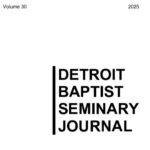Does Matthew 24 Describe the Rapture of the Church (Part 4)
Read Part 1 here, Part 2 here, and Part 3 here.
In this series, we have been examining the arguments made by John Hart in Evidence for the Rapture that our Lord Jesus describes the pre-tribulation rapture of his church in Matthew 24:36–44. To review, Hart, in my opinion, makes a very plausible case that (1) the switch from signs before 24:36 to non-signs after 24:36, (2) the structural marker at the beginning of verse 36, and (3) the switch to describing the singular “day” all indicate that, at verse 36, Jesus switches from describing his “coming” internally to describing it externally. This “coming” is the Day of the Lord, a complex of events that will have many separate events that will occur within it. Things within this Day will be signs and have signs, but there will be no sure signs before it.
Hart’s next two arguments build off this to show that Jesus describes this coming Day of the Lord as an imminent event that will arrive without any warning.
Argument #4: The Comparison Made to the Days of Noah
In Matthew 24:37–39, Jesus compares the “coming of the Son of Man” (v. 39) to the “days of Noah” (v. 37). The comparison specifically is between the unexpected way that this “coming” will arrive. In the “days of Noah,” people were going about the usual events of life (“eating and drinking, marrying and giving in marriage”[1]) right up until the time Noah entered the ark (v. 38). These people did not know what would happen until the Flood arrived.[2]Something similar will occur at the “coming of the Son of Man.”[3]
This comparison would seem to support the view that the “coming of the Son of Man” is a description of the arrival of the Day of the Lord viewed as a package, as described in the previous post. If you do not believe that there will be a final time of unprecedented tribulation in the years immediately prior to Jesus’ physical return to earth, this argument will not be very convincing. However, suppose you are, like me, convinced by other passages that there will be this final time of distress, as in Matthew 24:21—unprecedented in its misery for the inhabitants of the earth but short enough that some will live through it (Matt 24:22). In that case, our Lord seems to be describing the sudden onset of that time in Matthew 24:37–39. As Hart rightly notes, if Jesus in 24:37–39 is describing his physical return to end this period of tribulation, “How can a ‘business-as-usual’ attitude toward life exist at the precise time” as the world is describing the types of judgments predicted by Jesus in Matthew 24:21–22 and in the book of Revelation?
Assuming again that a passage like Revelation 6 describes this time of tribulation, those who are on earth during that time appear to be aware that God’s wrath is being poured out and are not merely going about life as usual—they are hiding in caves and fainting with terror (see, e.g., Rev 6:15–17; cf. Luke 21:25–26). As Hagner (who is not arguing for Hart’s position) reminds us, “The people of Noah’s day were oblivious to all else than their own pleasurable life. And they had no inkling of the judgment that was to come upon them until it was too late.”[4]Look again at Matthew 24:39, “they knew nothing about what would happen until the flood came and took them all away.” Therefore, instead of describing his physical return following a period of distress, it seems more likely that Jesus is describing a “coming” or arrival that will coincide with or precede the beginning of these judgments. A “coming” after an extended time of judgment does not seem to fit our Lord’s words.
Argument #5: Paul’s Teaching in 1 Thessalonians 5
As already mentioned in the previous installment of this series, Hart, along with many others, has noted the parallels between Jesus’ statements regarding the coming of the Day of the Lord in Matthew 24 and 1 Thessalonians 4–5. In addition to the similarity in content between Jesus’ teaching and Paul’s teaching, Hart points to evidence that Paul is basing his teaching to the Thessalonians on his Lord’s words in the Olivet Discourse. In 1 Thessalonians 4:2, Paul appeals to Jesus’ authority (4:2). In the passage regarding the rapture, Paul says that his teaching is “according to the Lord’s word” (4:15). And in 5:2, Paul reminds the Thessalonians that they “know very well that the day of the Lord will come like a thief in the night.” Even if you argue that 4:2 and 4:15 do not necessarily mean that Paul is building off the Olivet Discourse (I am not sure that either requires this, but the second might imply this), this statement in 5:2 does seem to indicate that Paul expects the new believers in Thessalonica to know of Jesus’ teaching in Matthew 24. In Matthew 24:37–39, the Day of the Lord will come suddenly on the people of this earth like the Flood in Noah’s day. Similarly, Paul says that people will be saying “Peace and safety,” when the “labor pains” of the Day of the Lord come on them “suddenly” and “they will not escape” (2 Thess 5:3).
We will come back to Paul’s teaching in 1 Thessalonians 5. However, at this point, I would just point out that immediately following the passage from which we get our word rapture—one of the passages that is commonly understood as a description of Jesus’ gathering of his people at his Second Coming—Paul also seems to follow our Lord’s teaching when he describes Jesus’ coming, the Day of the Lord, as something that arrives suddenly and catches the world off guard. Suppose the rapture described in 1 Thessalonians 4 comes during or after the Day of the Lord. In that case, it is at least difficult to see how Paul and Jesus could describe the Day itself arriving without prior warning.
[1] Scripture quotations will be from the NIV 2011.
[2] I think our Lord’s illustration is more compelling if there were people in Noah’s day who, because the Flood was global, did not hear Noah preach or see his ark being built. On this bigger question of whether the Flood was global, I recommend this recent Theologically Driven podcast.
[3] As Hart notes, Luke 17:28, a passage that appears parallel, adds that the coming of the Son of Man will be like when people were “buying and selling, planting and building” in the days of Lot leading up to the sudden destruction of Sodom.
[4] Donald A. Hagner, Matthew, Word Biblical Commentary (Dallas: Word, 1995), 2:719.



